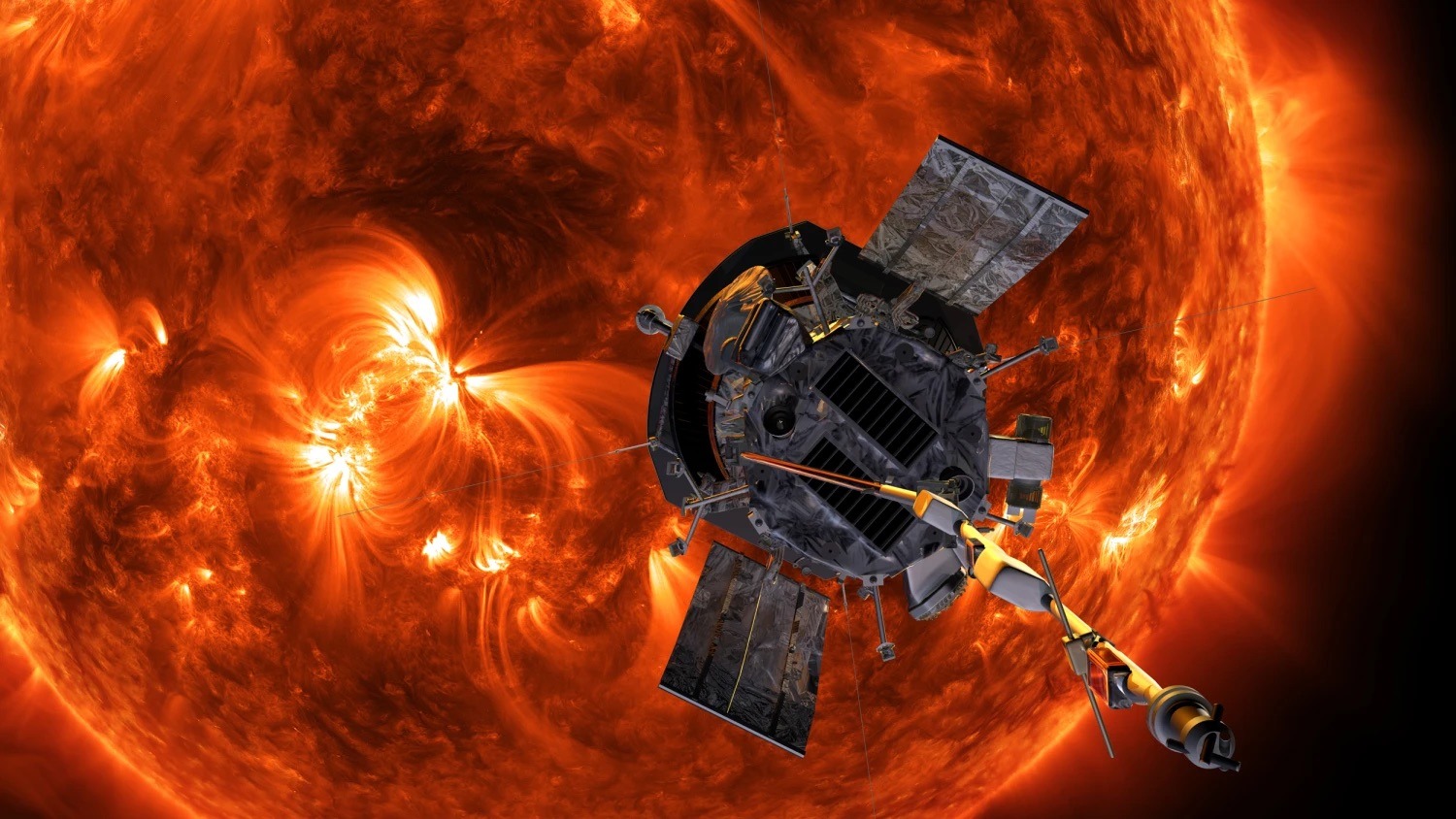Parker Solar Probe closest approach to Sun
The Parker Solar Probe, launched by NASA in 2018, is on a historic mission to make the closest-ever approach to the Sun. As it plunges into our star’s outer atmosphere, known as the corona, the spacecraft will endure extreme temperatures and intense radiation. The goal is to better understand how the Sun works.
This Christmas Eve fly-by marks a record-breaking milestone, as the probe will come within just 3.8 million miles (6.2 million km) of the Sun’s surface. During the fly-by, the probe will face temperatures of 1,400°C and radiation that could potentially damage its onboard electronics. To protect itself, it is shielded by an 11.5 cm (4.5 inches) thick carbon-composite layer.
The Parker Solar Probe will also be traveling faster than any human-made object ever: at a blistering speed of 430,000 mph. To put that into perspective, it’s like flying from London to New York in under 30 seconds.
While the spacecraft will be out of communication for several days during this scorching pass, scientists are eagerly awaiting a signal, which is expected to arrive on 27 December. If the probe survives, it could provide valuable insights into the Sun’s behavior, including answers to long-standing scientific mysteries.
So far, the probe has made 21 fly-bys of the Sun, getting closer with each pass, but this upcoming approach will be the closest yet. The hope is that the Parker Solar Probe’s unprecedented journey through the Sun’s outer atmosphere will help solve a major enigma in solar physics.




